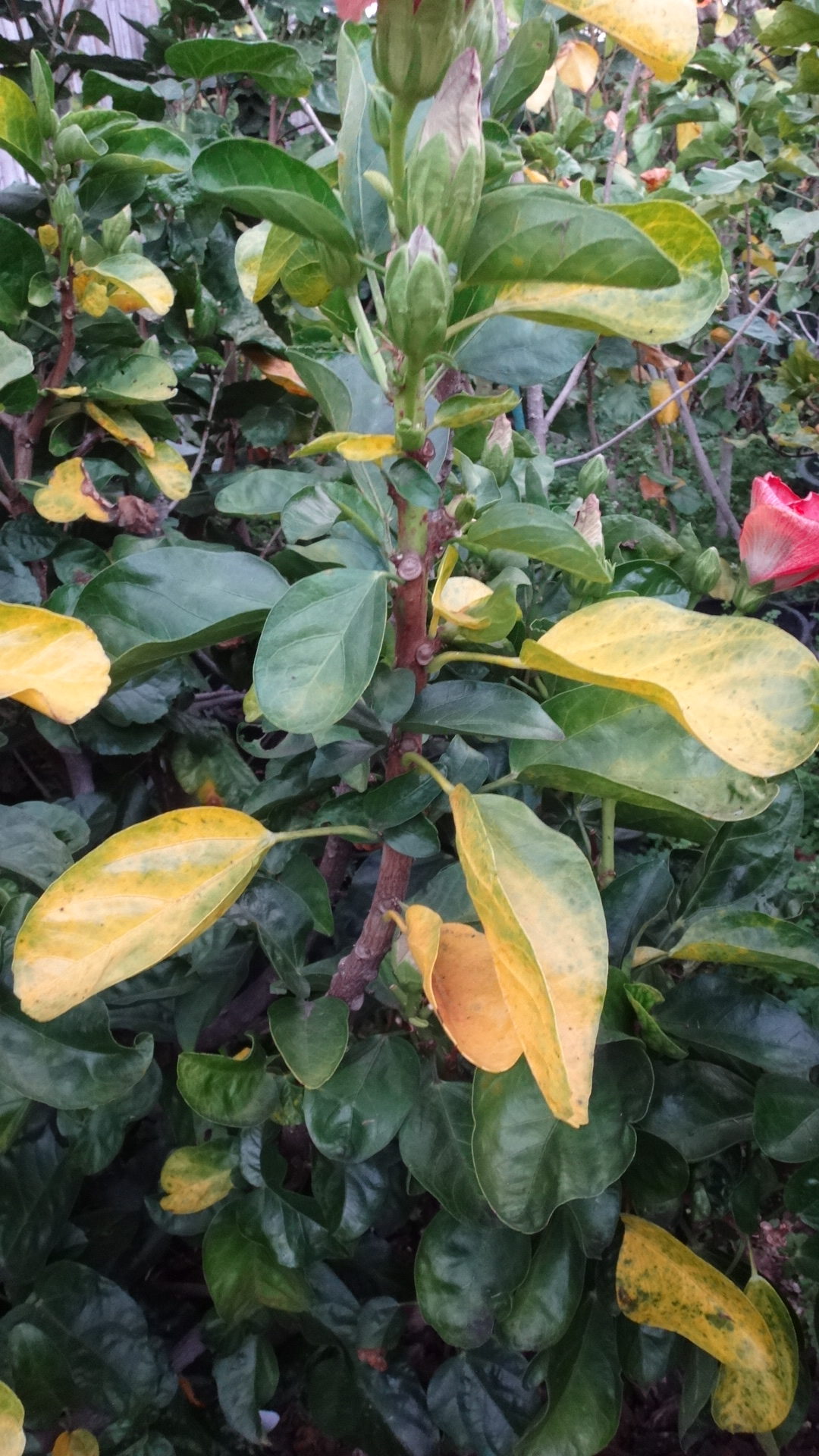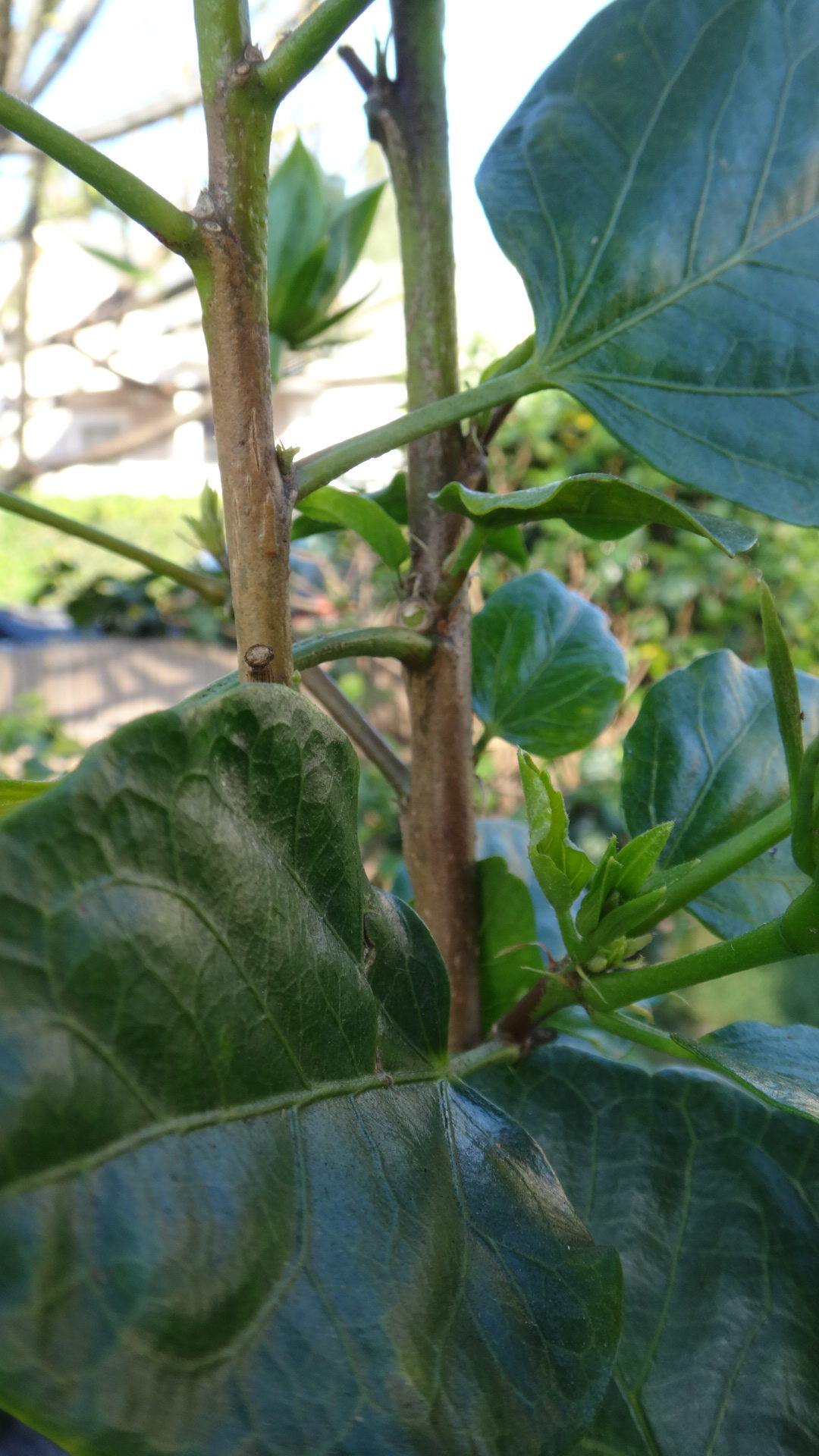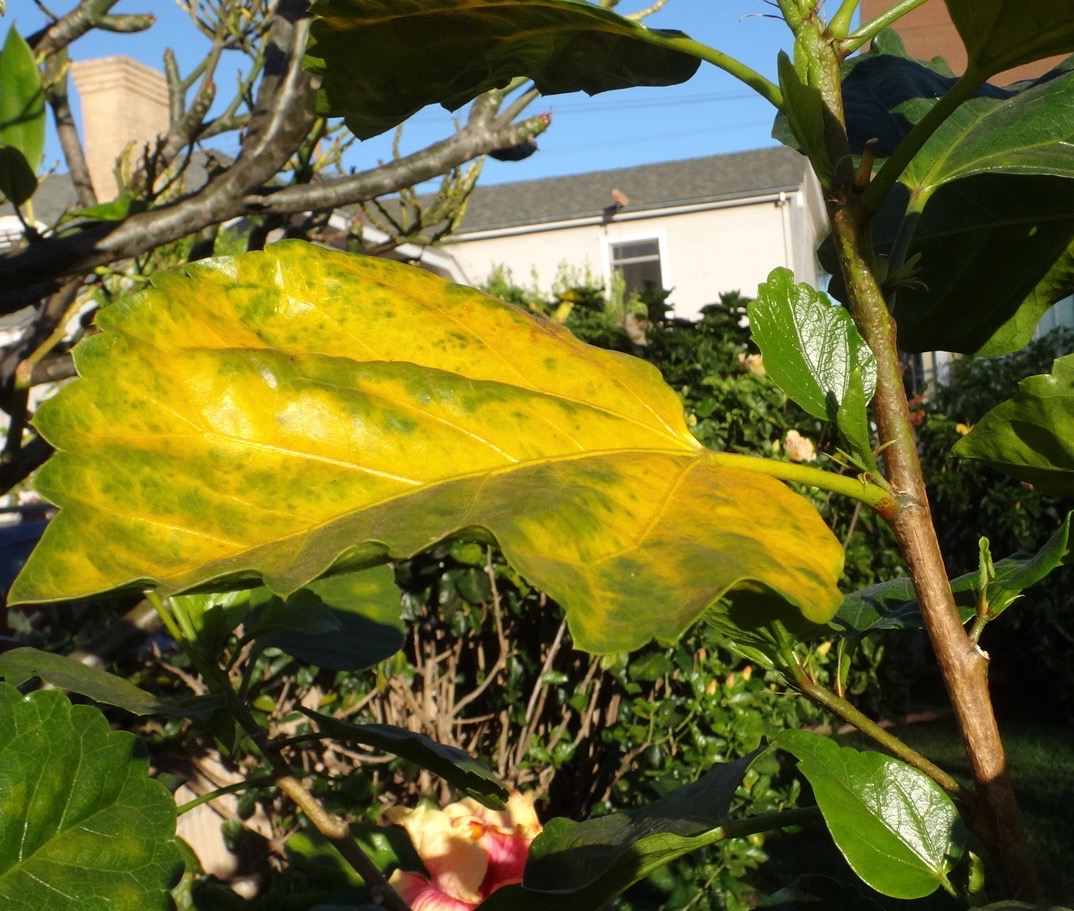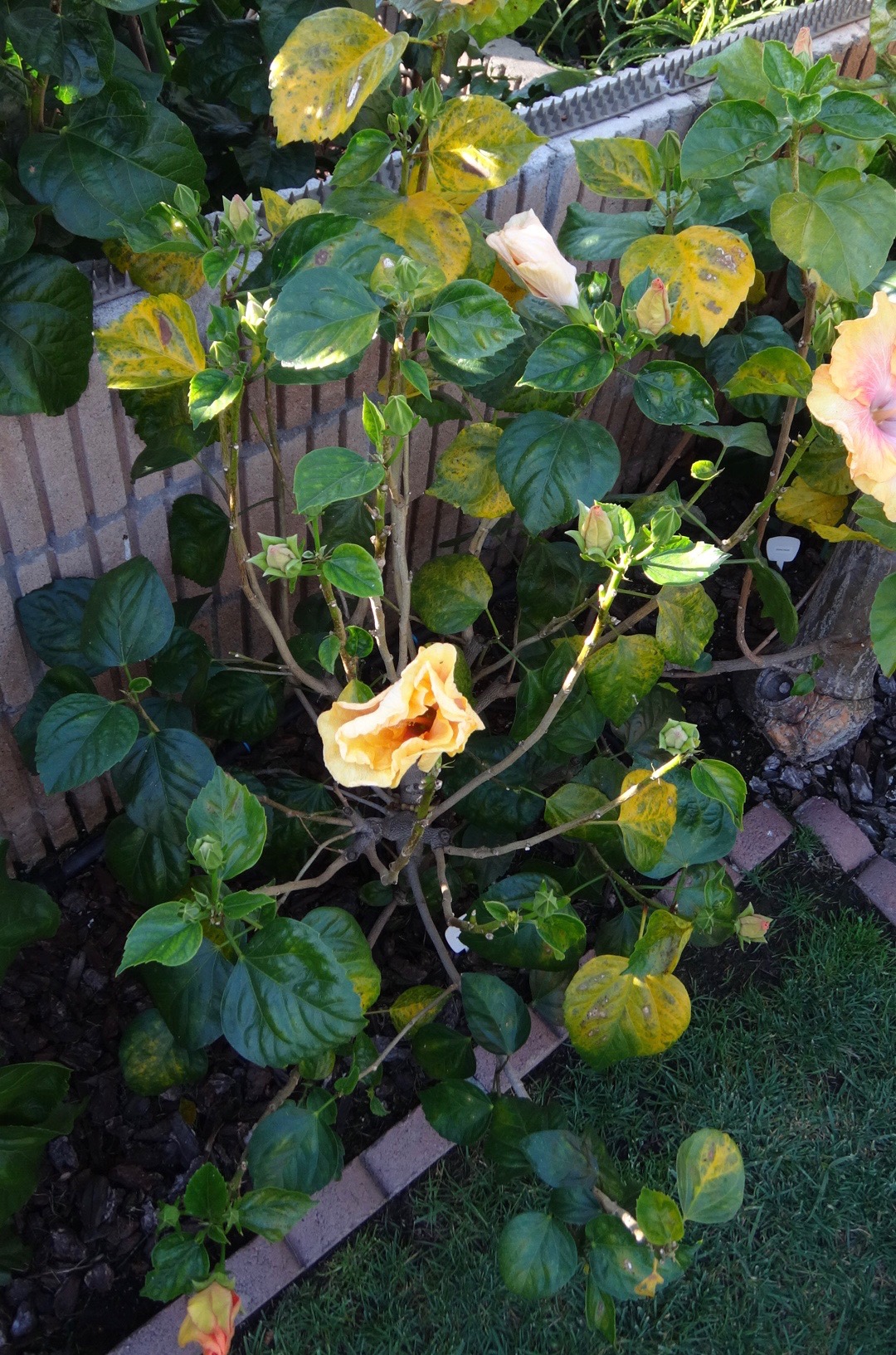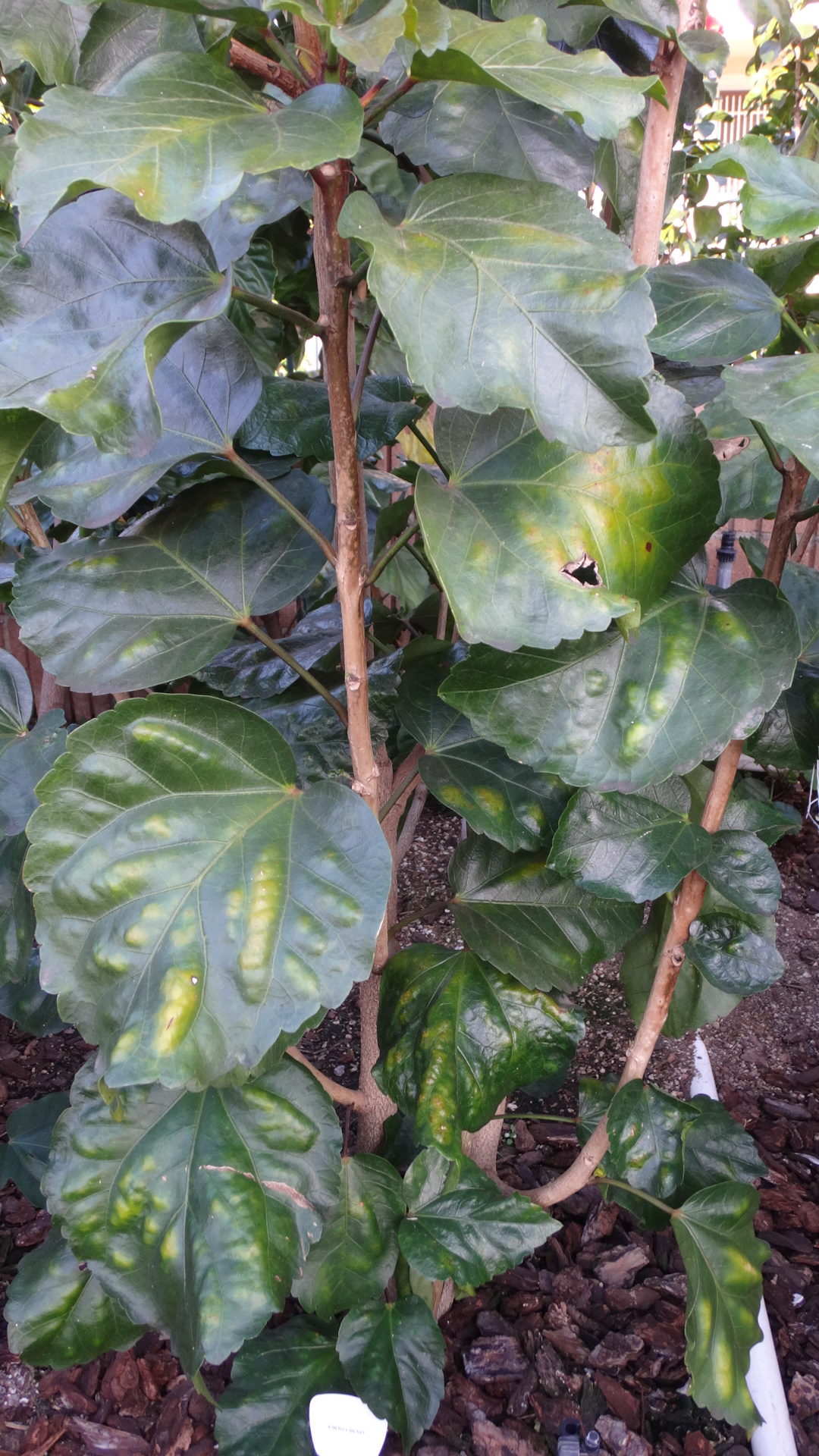Yellow Leaves Can Be A Good Thing Too
For those of us that grow exotic hibiscus this site is a familiar one that we dread seeing. Our beautiful green plants full of yellow leaves. Not what you want to see when you spend so much time and energy trying to get them into tip top shape. But there is a twist here to the photo above and it all has to do with when the photo was taken. The reason has to to do with the time of year and if your plants are healthy and have the proper conditions they need to flourish then getting yellow leaves can be a good sign. Simply put, your exotic hibiscus are telling you that they are now starting to go into their first spring growth spurt. Your exotic hibiscus’ first spring growth spurt for those that live in Southern California usually starts from mid January to mid February. For all climate zones in the U.S. this is probably the earliest start in the season (except Florida) for plants to begin their spring growth spurts as other regions might not see their’s for a couple more months so we have it good here.
So how do you know your plant is starting it’s spring growth spurt?
Yellow leaves! Yes the thing that we dread seeing on our plants during all other parts of the year is a good thing in January and February. Why yellow leaves, very simply your plant is going to discard all the leaves from last year and replace them with either new leaves or better yet with new branches. When you see branches coming in where leaves exist that is a sign your plant is in excellent health and is not just growing but thriving.
We here at the Southern California Hibiscus Society get quite a few worried emails this time of year by growers who think their plants are suddenly declining for unknown reasons. When we mention that this is the normal time of year for them to start regenerating new leaves and discarding the old ones they many times do not see any new leaves, just the current ones on the plant that are yellowing. That is correct. It has to do with the genetic traits of each plant. Some plants will first start losing their leaves if not all of them before the new baby leaves start to emerge from the nodes on the branch. Other exotic hibiscus plants will do it simultaneously and you will see the new baby leaves or branches start to emerge while last year’s leaf is still strongly attached.
Simultaneous Leafing
This first group of photos show how exotic hibiscus simultaneously generate new leaves or branches while still maintaining their current leaves. Note that you can see the beginning signs on the mature current leaves that the plant is preparing to discard them (varying degrees of yellow are starting to show on some).
Above is Pinot Noir – it makes it very obvious which leaves are goners
Here is a great example of not just new leaves emerging but it is producing a new branch!
Above is a great example of the tiniest beginnings of a new leaf emerging (left branch) while the mature leaf still looks completely normal
Above photo shows Cosmic Energy producing new branches where just leaves grew before – nice!
The above photo of Midnight Tryst is a good example of your plant showing you that when healthy it continues going on with all other plant functions like bud production and blooming while discarding old leaves and producing new ones. Aren’t we fortunate that people like Charles Black hybridized their plants to be so strong that many of them never lose their foliage as the leaf replacement cycle is simultaneous! This has the extra advantage of your plant not having much of a slow down in it’s ability to continue to gather in sunlight and photosynthesize for high energy input.
Yellow leaves without baby new leaves
The next two photos show plants that lose their leaves first and then start to generate new leaves. This is the one that fools a lot of growers that something is wrong with their plant and understandably so. Who wants to see their beautiful lush exotic hibiscus look like a stick plant with all the love and care put into making it flourish? So some patience is required and most critical is you have to keep in mind that now that your plant has a lot less leaves it cannot transpire out the same amount of water from the soil. So this might require you to proportionately reduce the amount of water your plant is getting and gradually increase it matching the rate of growth of the new leaves.
Above is Blush of Youth – note the absence of any new baby leaves as the plant continues to shed the current leaves. This photo is important for growers to see as you will observe that the plant continues to bloom and produce new buds at a brisk rate. That shows that plant is in good health and coupled with the time of year it means it is in the process of shedding last season’s leaves
Above is Energy Blast – here the leaves are starting to show signs of yellowing as the plant begins to shut down nutrients to the leaves yet no baby leaves have appeared yet at the branch nodes. You can see the spots on the branch where I have already removed the yellowing leaves and there is no activity yet at those nodes.
The above photo of Floral Bliss is a great example of the first signs of leaf discoloration that your plant is starting it’s spring growth spurt. You can pretty easily see the new leaves already gaining decent size and it looks like quite a few of the nodes are now producing branches instead of just replacement leaves.
Growth spurts are not a constant process
We hope this post helps you better determine when your plants are starting their first spring growth spurts. Being that in Southern California our spring growth spurts happen so early in the growing season there is a higher risk factor that undesirable weather can occur after the growth spurt process has started. We have seen quite a few winters and springs where the plants significantly slow down or even stop their growth spurts due to cold snaps and rainy stretches. It is also common to see the new baby leaves turn yellow and fall off as your exotic hibiscus senses inputs it does not like and decides to use or save it’s resources for self preservation. Our current drought weather pattern we have had this winter has made it rather easy for our plants to do well with most days full of abundant sunshine and few nights that have fallen below 40F. I know my plants have had one of their earliest starts for their first spring growth spurts.
And finally remember the Golden Rule of Exotic Hibiscus growing: What you see on your plants now happened 2-3 weeks ago. That time lag factor of what your plants are currently doing means you need to keep track of environmental conditions and inputs you gave them to understand what they are showing you now. This time of year you need to think back to what the weather and temps were like, that also includes dry Santa Ana wind events which can be tough on your plants (very low humidity and cold nights). These are all factors that can affect your plant’s new growth and make it slow down, speed up, stop and even disappear. Keen observations and patience are key to navigating the ups and downs we see especially during winter.
Wishing you all Happy Growing and Colorful Blooms!
The SCHS Crew

